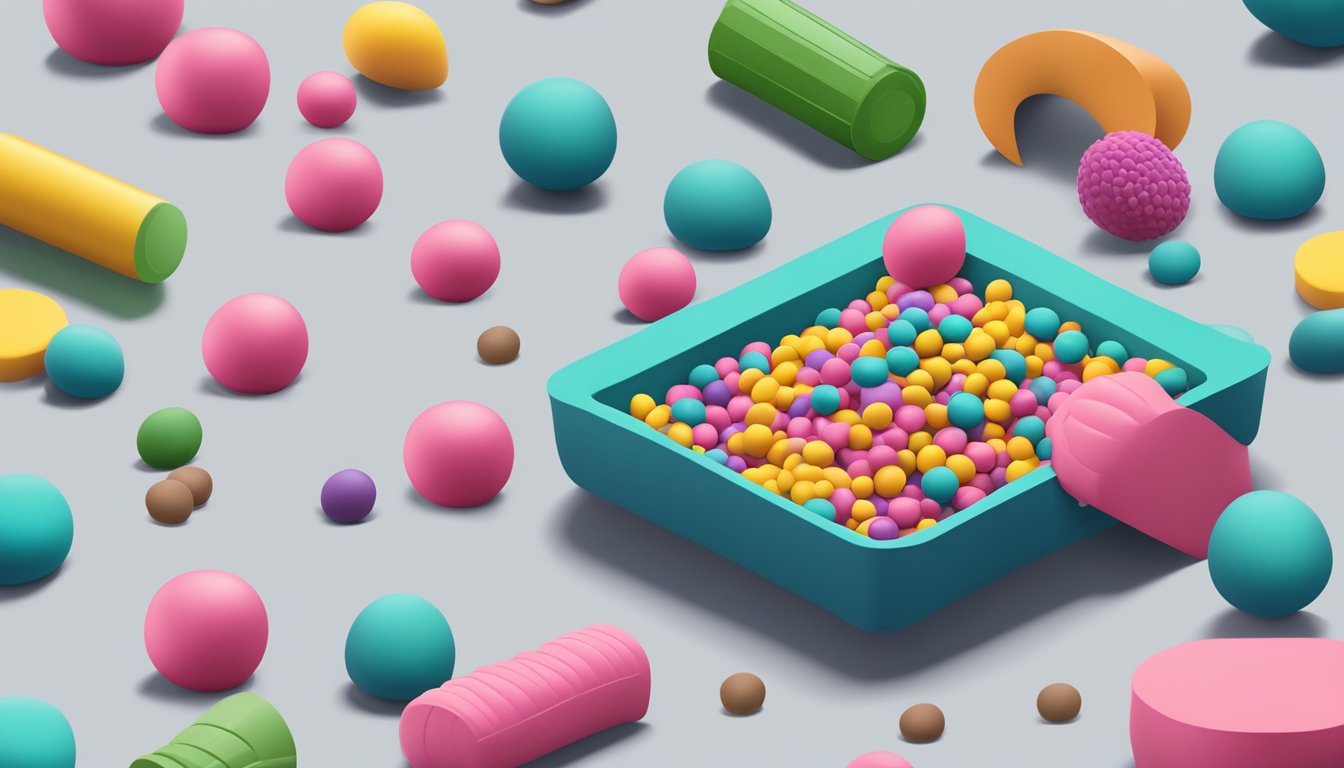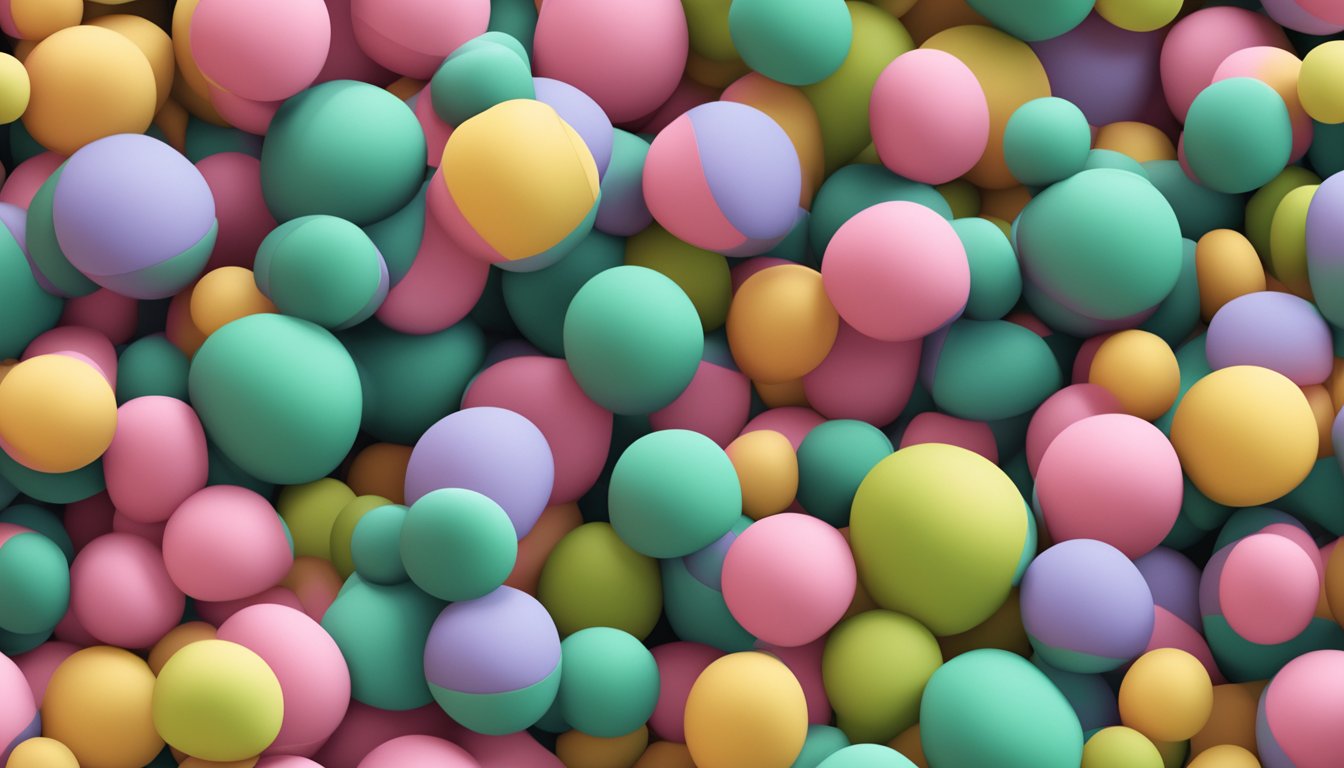Antioxidant in Rubber Compounding: Benefits and Applications
20/01/2024
Antioxidant in Rubber Compounding are an essential component in the rubber industry, as they protect rubber products from degradation caused by exposure to oxygen, heat, and light. Rubber products are used in a wide range of industries, including automotive, construction, and healthcare. Without antioxidants, rubber products would deteriorate quickly, leading to reduced performance and increased safety risks.

The use of antioxidants in rubber compounding has been a topic of research for many years. Researchers have developed various types of antioxidants, including phenolic, amine, and phosphite antioxidants, to improve the performance of rubber products. The choice of antioxidant depends on the type of rubber, the application, and the environmental conditions in which the product will be used. For example, some antioxidants are more effective in protecting against heat, while others are more effective against ozone.
Fundamentals of Antioxidants in Rubber Compounding

Antioxidants are an important component of rubber compounding. They are added to rubber to prevent or delay the oxidation process, which can cause rubber to degrade over time. Oxidation can occur due to exposure to heat, light, or oxygen, and it can lead to cracking, hardening, and loss of elasticity in rubber products.
There are two main types of antioxidants used in rubber compounding: primary and secondary. Primary antioxidants are added to rubber during the manufacturing process to prevent oxidation from occurring. They work by reacting with free radicals, which are unstable molecules that can cause oxidation. Secondary rubber antioxidants are added to rubber after it has been manufactured to prevent further oxidation from occurring. They work by reacting with the products of oxidation, such as peroxides, to prevent them from causing further damage.
The choice of antioxidant depends on the type of rubber being used and the intended application of the product. For example, some antioxidants are more effective at high temperatures, while others are more effective at low temperatures. Some antioxidants are also more effective at preventing specific types of oxidation, such as ozone cracking or heat aging.
Commonly used primary antioxidants in rubber compounding include phenolic antioxidants, such as 2,6-di-tert-butyl-4-methylphenol (BHT) and 2,2′-methylenebis(4-methyl-6-tert-butylphenol) (MBMBP), and amine antioxidants, such as N-phenyl-1-naphthylamine (PNA) and diphenylamine (DPA). Commonly used secondary antioxidants include quinoline-based antioxidants, such as 6PPD (N-(1,3-dimethylbutyl)-N’-phenyl-p-phenylenediamine) and IPPD (N-isopropyl-N’-phenyl-p-phenylenediamine), and aminic antioxidants, such as TMQ (polymerized 2,2,4-trimethyl-1,2-dihydroquinoline).
It is important to note that while antioxidants can improve the performance and lifespan of rubber products, they can also have negative environmental impacts if not handled properly. Some antioxidants, such as 6PPD, can generate toxic byproducts when they degrade, which can harm aquatic life. Therefore, it is important to choose antioxidants that are effective and environmentally friendly, and to handle them with care during manufacturing and disposal.
Types of Antioxidants Used in Rubber

Antioxidants are compounds that are added to rubber to prevent or delay its degradation by oxidation. There are two main types of antioxidants used in rubber compounding: primary and secondary. Primary antioxidants are also known as hindered phenols, while secondary antioxidants are also known as amines.
Primary Antioxidants
Primary antioxidants are compounds that act as radical scavengers. They react with free radicals to form stable products that do not contribute to further oxidation of the rubber. Primary antioxidants are typically used in combination with secondary antioxidants to provide maximum protection against oxidation.
Some common primary antioxidants used in rubber compounding include:
- 2,2,4-trimethyl-1,2-dihydroquinoline (TMQ)
- N-phenyl-1-naphthylamine (PAN)
- 4,4′-bis(alpha,alpha-dimethylbenzyl)diphenylamine (AO-2246)
- 4,4′-thiobis(6-tert-butyl-m-cresol) (SMB)
- 2,2′-methylenebis(4-methyl-6-tert-butylphenol) (MBMB)
Secondary Antioxidants
Secondary antioxidants are compounds that act as hydrogen donors. They donate hydrogen to free radicals to form stable products that do not contribute to further oxidation of the rubber. Secondary antioxidants are typically used in combination with primary antioxidants to provide maximum protection against oxidation.
Some common secondary antioxidants used in rubber compounding include:
- N-phenyl-2-naphthylamine (PBN)
- N-1,3-dimethylbutyl-N’-phenyl-p-phenylenediamine (6PPD)
- N-1,3-dimethylbutyl-N’-phenyl-p-phenylenediamine (7PPD)
- Octylated diphenylamine (ODPA)
- N-isopropyl-N’-phenyl-p-phenylenediamine (IPPD)
Both primary and secondary antioxidants are important in rubber compounding to prevent degradation by oxidation. The choice of antioxidant depends on the specific application and the type of rubber being used.
Mechanism of Antioxidant Action

Antioxidants play a crucial role in rubber compounding by preventing or slowing down the degradation of rubber due to oxidation. The mechanism of antioxidant action involves the interruption of the oxidation chain reaction by reacting with free radicals.
Antioxidants can be classified into two categories: primary and secondary. Primary antioxidants, also known as chain-breaking antioxidants, are added to rubber compounds to react with free radicals generated during the oxidation process. They terminate the chain reaction by donating hydrogen atoms to the free radicals, thereby preventing the formation of new radicals. Common primary antioxidants used in rubber compounding include hindered phenols, amines, and phosphites.
Secondary antioxidants, also known as peroxide decomposers, are added to rubber compounds to prevent the formation of peroxide intermediates during the oxidation process. They react with peroxides to form stable compounds that do not decompose to form free radicals. Common secondary antioxidants used in rubber compounding include thioesters, phosphonites, and hydroxylamines.
Antioxidants can also act as synergists, enhancing the effectiveness of other antioxidants in the rubber compound. For example, the combination of a hindered phenol primary antioxidant with a phosphite secondary antioxidant can provide excellent protection against oxidation.
Overall, the mechanism of antioxidant action in rubber compounding involves the interruption of the oxidation chain reaction by reacting with free radicals. Primary and secondary antioxidants are used to prevent or slow down the degradation of rubber due to oxidation, and can act as synergists to enhance their effectiveness.
Factors Influencing Antioxidant Efficiency
Antioxidants are an essential component in rubber compounding as they help to delay the aging process of rubber products. However, the efficiency of antioxidants can be influenced by several factors such as temperature, oxygen and ozone exposure, and rubber composition.
Temperature Effects
Temperature has a significant effect on the efficiency of antioxidants. At high temperatures, the rate of oxidation increases, leading to a reduction in the effectiveness of the antioxidant. In contrast, at low temperatures, the rate of oxidation decreases, leading to an increase in the effectiveness of the antioxidant. Therefore, it is important to choose an antioxidant that is suitable for the temperature range in which the rubber product will be used.
Oxygen and Ozone Exposure
Oxygen and ozone exposure can also affect the efficiency of antioxidants. Rubber products that are exposed to oxygen and ozone can undergo oxidative degradation, leading to a reduction in the effectiveness of the antioxidant. Therefore, it is important to choose an antioxidant that is resistant to oxygen and ozone exposure.
Rubber Composition
The composition of the rubber product can also affect the efficiency of antioxidants. Fillers, such as silica, can exhibit a synergistic effect with antioxidants, leading to an increase in their effectiveness. However, other additives, such as accelerators, can have a negative effect on the efficiency of antioxidants. Therefore, it is important to choose an antioxidant that is compatible with the other additives used in the rubber product.
In summary, the efficiency of antioxidants in rubber compounding can be influenced by several factors, including temperature, oxygen and ozone exposure, and rubber composition. It is important to choose an antioxidant that is suitable for the specific conditions in which the rubber product will be used to ensure its effectiveness in delaying the aging process of the product.
Antioxidant Selection Criteria
When selecting an antioxidant for rubber compounding, several criteria must be considered. These criteria include polymer compatibility, processing stability, and cost-benefit analysis.
Polymer Compatibility
The antioxidant must be compatible with the polymer used in the rubber compound. The compatibility ensures that the antioxidant does not react with the polymer, which can lead to degradation of the rubber compound. The compatibility can be determined by conducting a compatibility test. The test involves mixing the antioxidant with the polymer and observing the physical properties of the mixture.
Processing Stability
The antioxidant must be stable during the processing of the rubber compound. The processing involves high temperatures and shear forces, which can cause the antioxidant to degrade. The degradation of the antioxidant can lead to the formation of harmful by-products, which can affect the performance of the rubber compound. The processing stability can be determined by conducting a processing stability test. The test involves subjecting the antioxidant to the processing conditions and observing its performance.
Cost-Benefit Analysis
The selection of the antioxidant must also be based on a cost-benefit analysis. The cost of the antioxidant must be compared with its benefits in terms of the performance of the rubber compound. The benefits of the antioxidant include improved aging resistance, increased durability, and enhanced mechanical properties. The cost of the antioxidant includes its purchase price, storage cost, and handling cost. The cost-benefit analysis helps in selecting the most suitable antioxidant for the rubber compound.
In summary, the selection of the antioxidant for rubber compounding must be based on the compatibility with the polymer, processing stability, and cost-benefit analysis. The criteria ensure the selection of the most suitable antioxidant for the rubber compound, which enhances its performance and durability.
Processing Methods and Antioxidant Incorporation
Rubber compounding involves the addition of various additives to enhance the properties of the rubber. Antioxidants are among the most important additives, as they prevent the degradation of rubber by free radicals. However, the incorporation of antioxidants can be a challenging task due to their poor compatibility with rubber and the processing conditions.
There are several methods for incorporating antioxidants into rubber compounds. One method is to add the antioxidant during the mixing process. This method is known as the “dry method” and involves adding the antioxidant along with other rubber additives to the rubber during the mixing process. The mixing process can be done using either an open mill or an internal mixer. The dry method is the most common method used to incorporate antioxidants into rubber compounds.
Another method for incorporating antioxidants is the “wet method.” This method involves dissolving the antioxidant in a solvent and then adding the solution to the rubber during the mixing process. The wet method is less common than the dry method, but it can be useful for antioxidants that are difficult to disperse in the rubber.
In addition to the mixing process, the processing conditions also play a crucial role in the incorporation of antioxidants. High temperatures and shear forces can cause the degradation of antioxidants, reducing their effectiveness. Therefore, it is important to consider the processing conditions when incorporating antioxidants into rubber compounds.
Overall, the incorporation of antioxidants into rubber compounds is a crucial step in the rubber compounding process. The dry method is the most common method used, but the wet method can also be useful for certain antioxidants. The processing conditions should also be considered to ensure the effectiveness of the antioxidants.
Testing and Evaluation of Antioxidants
Accelerated Aging Tests
Accelerated aging tests are used to simulate the effects of long-term exposure to heat and oxygen on rubber compounds. These tests can help evaluate the effectiveness of antioxidants in preventing degradation of the rubber. One commonly used test is the ASTM D573 standard, which involves exposing the rubber sample to elevated temperatures and measuring changes in properties such as hardness, elongation, and tensile strength over time. The results of these tests can be used to compare the performance of different antioxidants and to optimize the formulation of rubber compounds.
Physical Property Measurements
Physical property measurements are another important aspect of testing and evaluating antioxidants in rubber compounding. These tests can help determine the effect of antioxidants on properties such as tensile strength, tear strength, and compression set. One commonly used test is the ASTM D412 standard, which measures the tensile strength and elongation of rubber samples. Other tests, such as the ASTM D624 standard for tear strength and the ASTM D395 standard for compression set, can provide additional information on the performance of the rubber compound.
Overall, testing and evaluation of antioxidants is an important step in the development of effective rubber compounds. By using accelerated aging tests and physical property measurements, manufacturers can optimize their formulations to improve the performance and durability of their products.
Regulatory Aspects and Environmental Considerations
Rubber antioxidants are widely used in the rubber industry to enhance the durability and lifespan of rubber products. However, the use of these chemicals has raised concerns about their potential impact on the environment. As a result, regulatory agencies have established guidelines to ensure that the use of rubber antioxidants is safe for both humans and the environment.
The European Union has implemented regulations under REACH (Registration, Evaluation, Authorization and Restriction of Chemicals) to control the use of rubber antioxidants. The regulation requires manufacturers to register their products and provide information on their safety and environmental impact. The regulation also restricts the use of certain chemicals that are deemed harmful to the environment.
The United States Environmental Protection Agency (EPA) has also established guidelines for the use of rubber antioxidants. The EPA’s Toxic Substances Control Act (TSCA) requires manufacturers to submit data on the safety and environmental impact of their products. The EPA has also established limits on the amount of certain chemicals that can be used in rubber products.
Rubber antioxidants can also have a significant impact on the environment. Studies have shown that the transformation products (TPs) of rubber antioxidants can adversely affect environmental organisms and even lead to environmental events. The potential impact of rubber antioxidants and their TPs on the environment has raised concerns among the public.
To address these concerns, researchers have conducted studies to understand the environmental occurrence and potential impact of rubber antioxidants and their TPs. Studies have shown that rubber antioxidants and their TPs can be found in soil, water, and sediment. The persistence of these chemicals in the environment has raised concerns about their long-term impact on the ecosystem.
In conclusion, regulatory agencies have established guidelines to ensure the safe use of rubber antioxidants in the rubber industry. However, the potential impact of these chemicals on the environment has raised concerns among the public. Researchers continue to study the environmental occurrence and potential impact of rubber antioxidants and their TPs to understand their long-term impact on the ecosystem.
Innovations and Trends in Antioxidant Technology
Antioxidant in Rubber Compounding play a crucial role in rubber compounding by preventing the degradation of rubber products from exposure to heat, oxygen, and light. Over the years, there have been numerous innovations and trends in antioxidant technology that have improved the performance and durability of rubber products.
One of the most significant trends in antioxidant technology is the development of more efficient and eco-friendly antioxidants. For instance, natural antioxidants such as phenolic compounds and flavonoids have gained popularity due to their excellent antioxidant properties and low toxicity. Additionally, researchers have explored the use of nanoparticles, enzymes, and other advanced materials as antioxidants, which have shown promising results.
Another trend in antioxidant technology is the use of multifunctional antioxidants. These are antioxidants that provide multiple benefits such as UV protection, anti-aging, and antimicrobial properties. This approach has allowed manufacturers to reduce the number of additives used in rubber compounding, leading to cost savings and improved product performance.
In recent years, there has also been a focus on improving the compatibility of antioxidants with rubber compounds. This has been achieved through the use of reactive antioxidants, which bond with the rubber matrix and provide long-lasting protection against degradation. Additionally, researchers have developed new coating technologies that allow for the controlled release of antioxidants, improving their effectiveness and longevity.
Antioxidant in Rubber Compounding the innovations and trends in antioxidant technology have significantly improved the performance and durability of rubber products. Manufacturers must continue to explore new and improved antioxidant technologies to meet the increasing demand for high-performance rubber products while reducing their environmental impact.
Case Studies: Antioxidant Applications in Different Rubber Products
Antioxidant in Rubber Compounding are widely used in the rubber industry to improve the performance, delay aging, and extend the service life of rubber products. In this section, we will discuss some case studies of antioxidant applications in different rubber products.
Tires
Tires are one of the most important rubber products that require the highest level of performance and durability. Antioxidants are used in tire production to protect the rubber from oxidation, which can cause cracking, hardening, and loss of elasticity. The type and amount of antioxidant used in tire production depend on the specific requirements of the tire, such as speed rating, load capacity, and temperature resistance. For example, a high-performance tire may require a higher level of antioxidant to withstand the increased stress and heat generated by high speeds.
Seals
Antioxidant in Rubber Compounding seals are used in various applications, such as automotive, aerospace, and industrial equipment. Antioxidants are used in seal production to prevent the rubber from cracking, hardening, and losing its sealing properties over time. The type and amount of antioxidant used in seal production depend on the specific requirements of the application, such as temperature range, chemical resistance, and pressure rating. For example, a seal used in a high-temperature application may require a higher level of antioxidant to withstand the increased heat.
Gloves
Rubber gloves are used in various applications, such as medical, food handling, and industrial. Antioxidants are used in glove production to prevent the rubber from aging and deteriorating over time. The type and amount of antioxidant used in glove production depend on the specific requirements of the application, such as durability, flexibility, and chemical resistance. For example, a glove used in a medical application may require a lower level of antioxidant to minimize the risk of allergic reactions.
Antioxidant in Rubber Compounding play a crucial role in the performance and durability of rubber products. The type and amount of antioxidant used depend on the specific requirements of the application. By using the right antioxidant, rubber products can withstand the stresses and environmental factors they are exposed to, ensuring their longevity and effectiveness.
Challenges and Future Outlook
Despite the significant progress made in the development of rubber antioxidants, there are still some challenges that need to be addressed in the future.
One of the main challenges is the toxicity of some of the antioxidants used in rubber compounding. While they are effective in preventing rubber degradation, they can also have adverse effects on human health and the environment. Therefore, there is a need for the development of non-toxic and eco-friendly antioxidants that can provide the same level of protection as traditional antioxidants.
Another challenge is the migration and blooming of antioxidants in rubber products, which can affect their performance and durability. To overcome this challenge, recent advances have been made to minimize the migration and blooming of antioxidants. For instance, researchers have developed new coating technologies that can prevent the migration of antioxidants from the rubber surface.
In addition, the increasing demand for high-performance rubber products has led to the development of new types of antioxidants that can provide better protection against aging and degradation. For example, some researchers have developed antioxidants that can provide protection against both heat and ozone, which are two of the main factors that contribute to rubber aging.
Overall, the future outlook for rubber antioxidants is promising, with ongoing research and development efforts aimed at addressing the challenges faced by the industry. With the development of new, non-toxic and eco-friendly antioxidants, as well as advancements in coating technologies, the performance and durability of rubber products are expected to improve significantly in the coming years.
Frequently Asked Questions
What are the most effective antioxidants for rubber compounding?
The most effective antioxidants for rubber compounding are phenolic antioxidants and amine-type antioxidants. Phenolic antioxidants are widely used in the rubber industry due to their excellent performance in protecting against thermal and oxidative degradation. Amine-type antioxidants are also commonly used because of their ability to scavenge free radicals and prevent chain scission reactions.
How do antioxidants improve the performance of rubber products?
Antioxidants improve the performance of rubber products by preventing or delaying the degradation of rubber caused by exposure to oxygen, heat, and light. The addition of antioxidants to rubber compounds can increase the service life of rubber products and enhance their mechanical properties, such as tensile strength and elongation.
What are the differences between natural and synthetic antioxidants in rubber compounding?
Natural antioxidants are derived from natural sources such as plants, while synthetic antioxidants are chemically synthesized. Natural antioxidants are often less effective than synthetic antioxidants due to their lower stability and shorter lifespan. Synthetic antioxidants, on the other hand, are more stable and can provide longer-lasting protection against degradation.
Can you provide examples of commonly used antioxidants in the rubber industry?
Some commonly used antioxidants in the rubber industry include:
- Phenolic antioxidants: 2,6-di-tert-butyl-4-methylphenol (BHT), 2,2′-methylenebis(4-methyl-6-tert-butylphenol) (MBMB), and octylated diphenylamine (ODPA).
- Amine-type antioxidants: N-phenyl-2-naphthylamine (PBN), N-isopropyl-N’-phenyl-p-phenylenediamine (IPPD), and N-cyclohexyl-2-benzothiazolesulfenamide (CBS).
What role do antiozonants play in enhancing the durability of rubber?
Antiozonants are a type of Antioxidant in Rubber Compounding that specifically protect rubber against degradation caused by ozone exposure. Ozone can cause cracking and other types of damage to rubber products, especially those used in outdoor applications. Antiozonants can improve the durability and lifespan of rubber products by preventing or delaying ozone-induced degradation.
How does the addition of antioxidant waxes affect the properties of rubber compounds?
The addition of Antioxidant in Rubber Compounding waxes can improve the processability and storage stability of rubber compounds. Antioxidant waxes can also enhance the mechanical properties of rubber products, such as tear strength and abrasion resistance. However, excessive use of antioxidant waxes can lead to a decrease in the tensile strength and elongation of rubber products.




